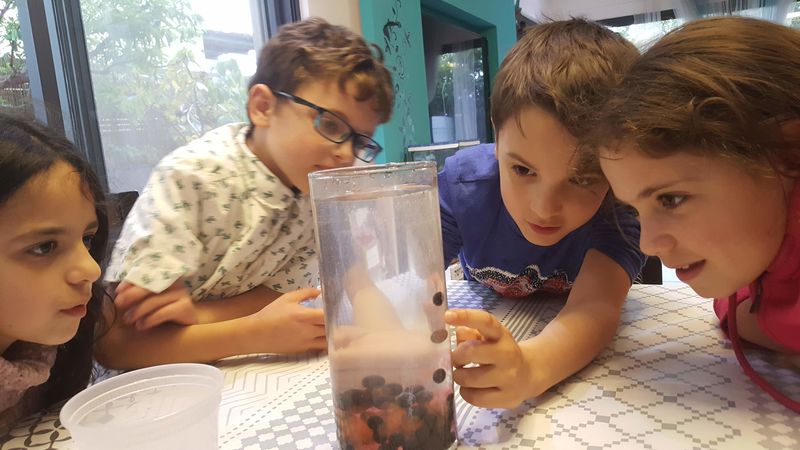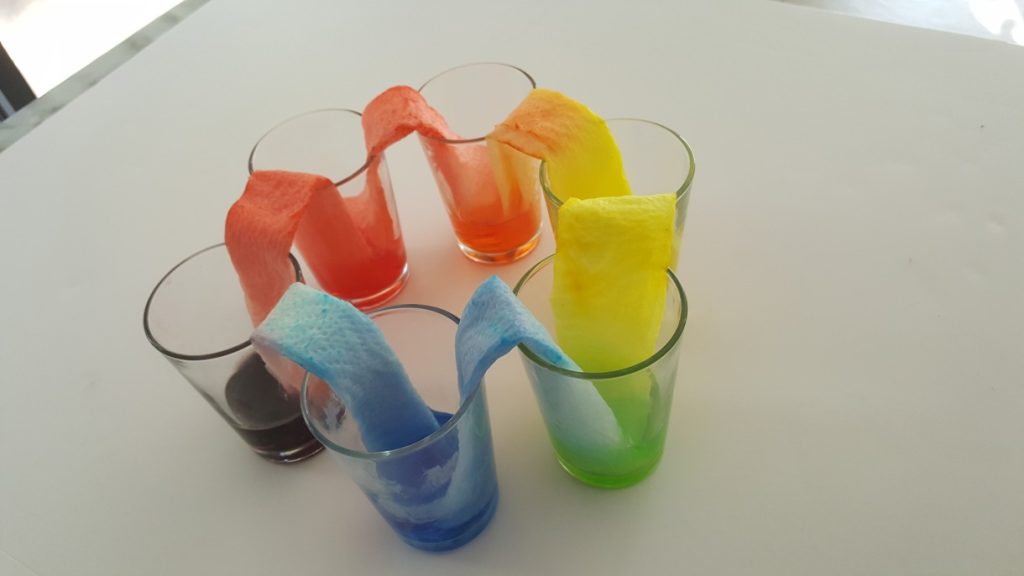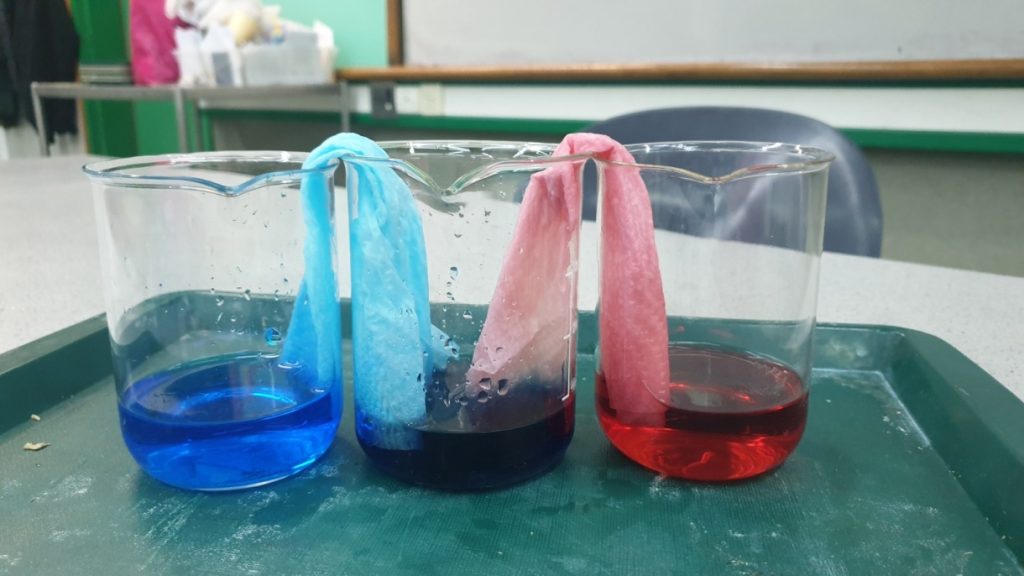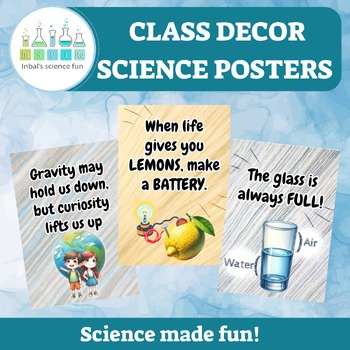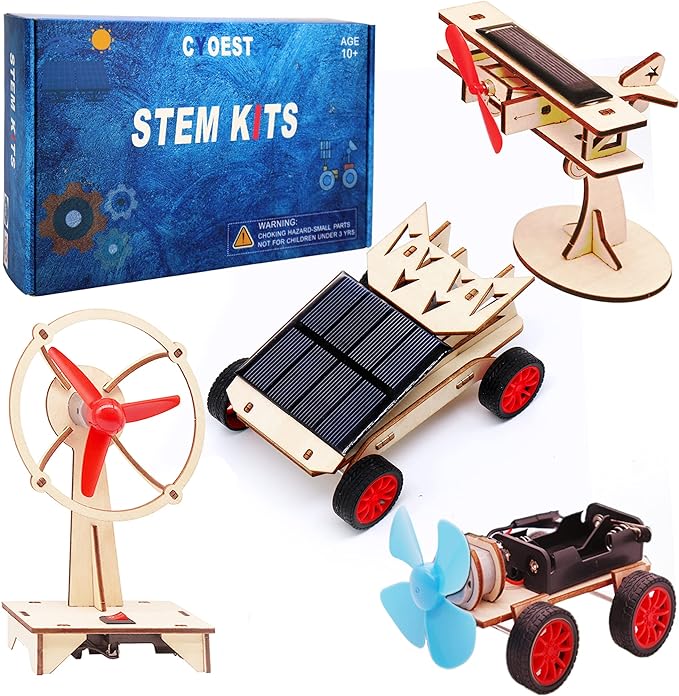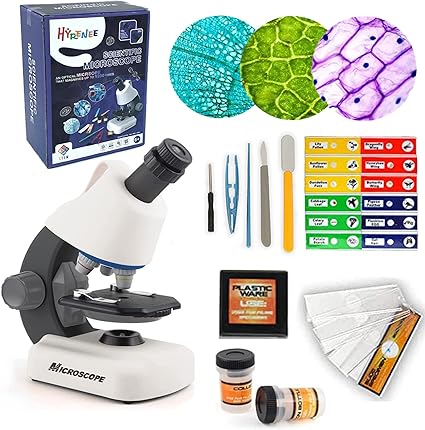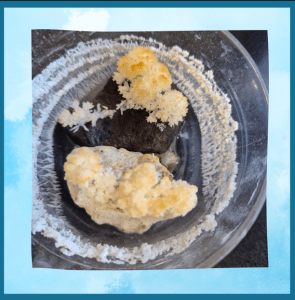Walking Water Experiment
Ready to wow the kids with some colorful science? In this simple but fascinating experiment, we’ll use basic supplies like water, food coloring, and paper towels to demonstrate capillary action in action. Watch as vibrant streams of color seem to travel against gravity right before your eyes. Not only is this easy DIY science project visually stunning, but it also opens up a perfect opportunity to discuss concepts like adhesion, cohesion, and surface tension. Set up this mini science show on your kitchen table or let it serve as an engaging lesson in the classroom. Either way, this easy colorful demo offers big educational value in a small set up that delivers eye-catching results. So grab some cups and gather ’round!
Materials:
- Glasses/cups (at least 3)
- Water
- Food coloring in primary colors (red, blue, yellow)
- Paper towels
What to do?
- Pour water into two cups and add food coloring (a different color in each cup)
- Place a paper towel between the first cup and the empty cup, and between the second cup and the empty cup
- Wait and observe what happens
- You can also conduct the experiment with 3 colors and 6 cups arranged in a circle or a row
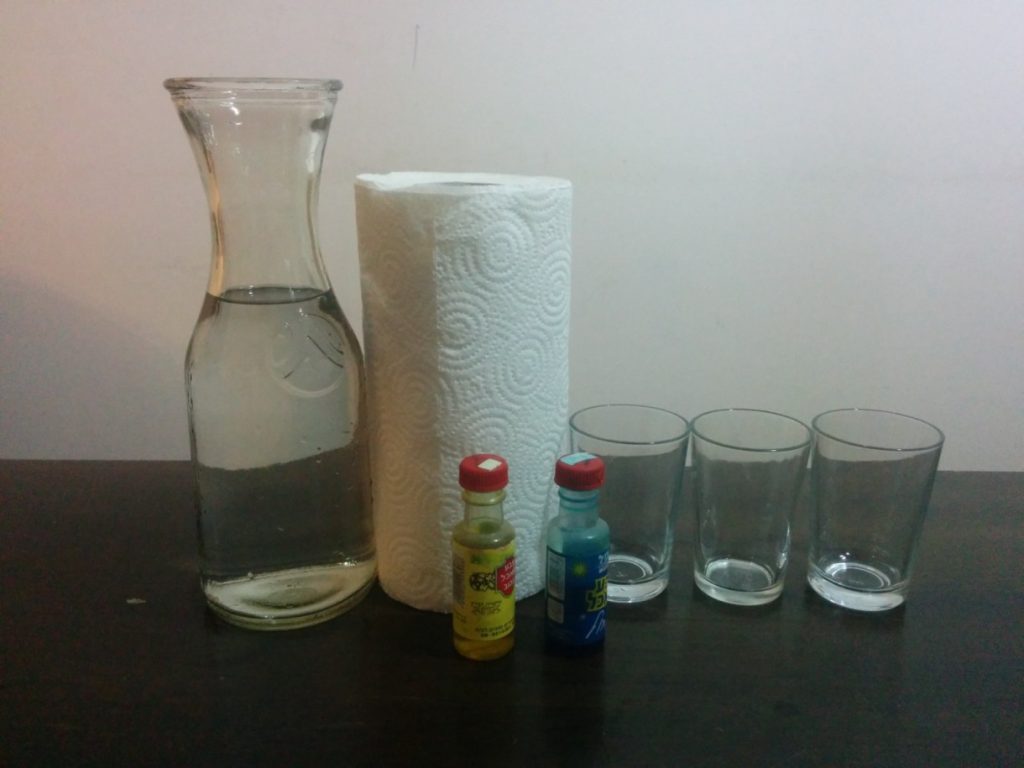
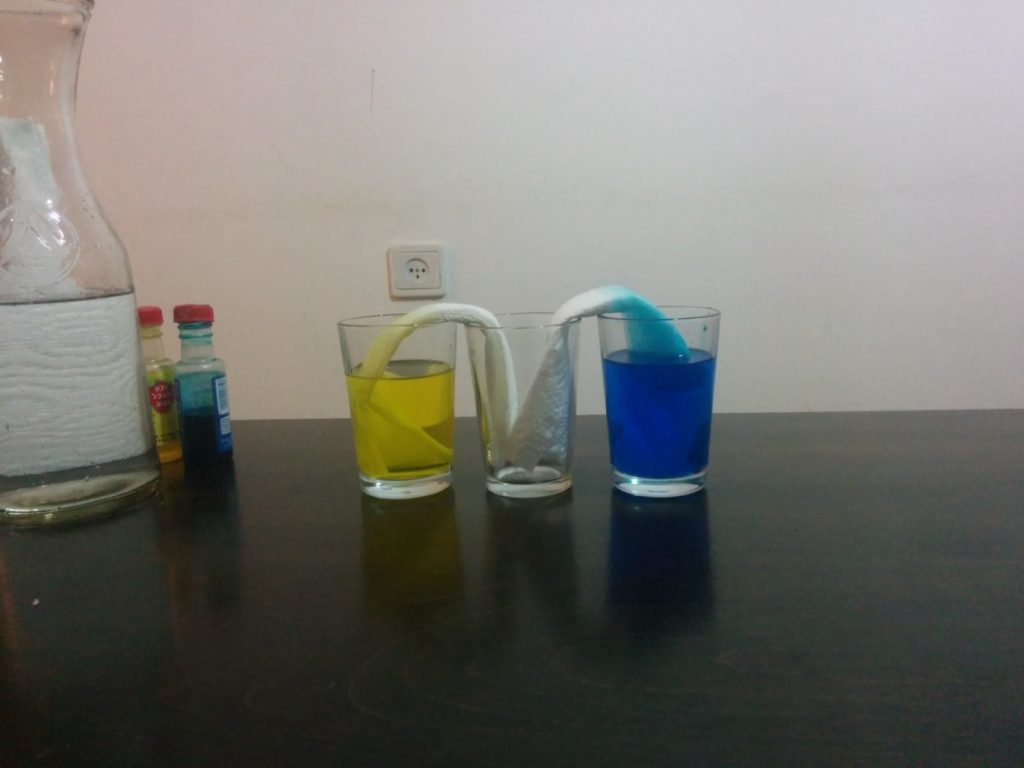
Exploring the Magic of Water Movement:
The Mysterious Journey of Water Against Gravity
How does water move from one cup to another, seemingly defying gravity? This experiment sheds light on a natural process that is fundamental to life on Earth.
The Secret Behind Plant Hydration
Have you ever pondered how trees transport water from their roots to their highest leaves without muscles or pumps? This mystery is unraveled by the inherent properties of water molecules and the plant’s ingenious use of them.
Cohesion and Adhesion: Nature’s Ingenious Tools
Water’s journey upwards is made possible by two key properties: cohesion and adhesion. Cohesion allows water molecules to stick together, while adhesion lets them adhere to other surfaces. This delicate balance facilitates water’s ascent through the plant’s xylem tubes.
Capillarity: Elevating Water Naturally
Inside a tree’s trunk, a network of minuscule tubes, or xylem, harnesses the adhesion of water to cellulose. This system, coupled with water’s cohesive forces, drives water upwards in a process known as capillarity.
Why Paper Bridges Work
Just like xylem tubes, the cellulose in paper and its airy structure create capillary action, enabling water to defy gravity and move across a paper bridge into another cup.
The Principle of Communicating Vessels
This experiment also demonstrates the principle of communicating vessels, ensuring that water levels in both cups balance out. This natural law explains why the Earth’s ocean levels are consistent, as long as the waters remain interconnected.
Through these observations, we gain insight into the essential processes that sustain life and maintain the Earth’s ecological balance.
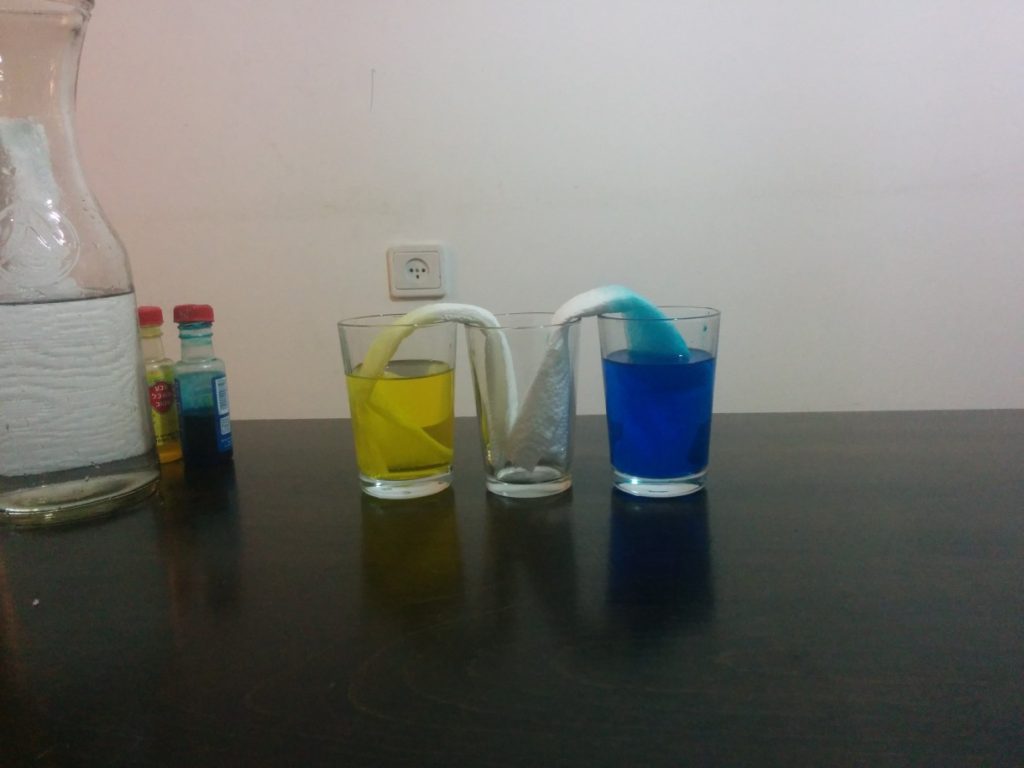
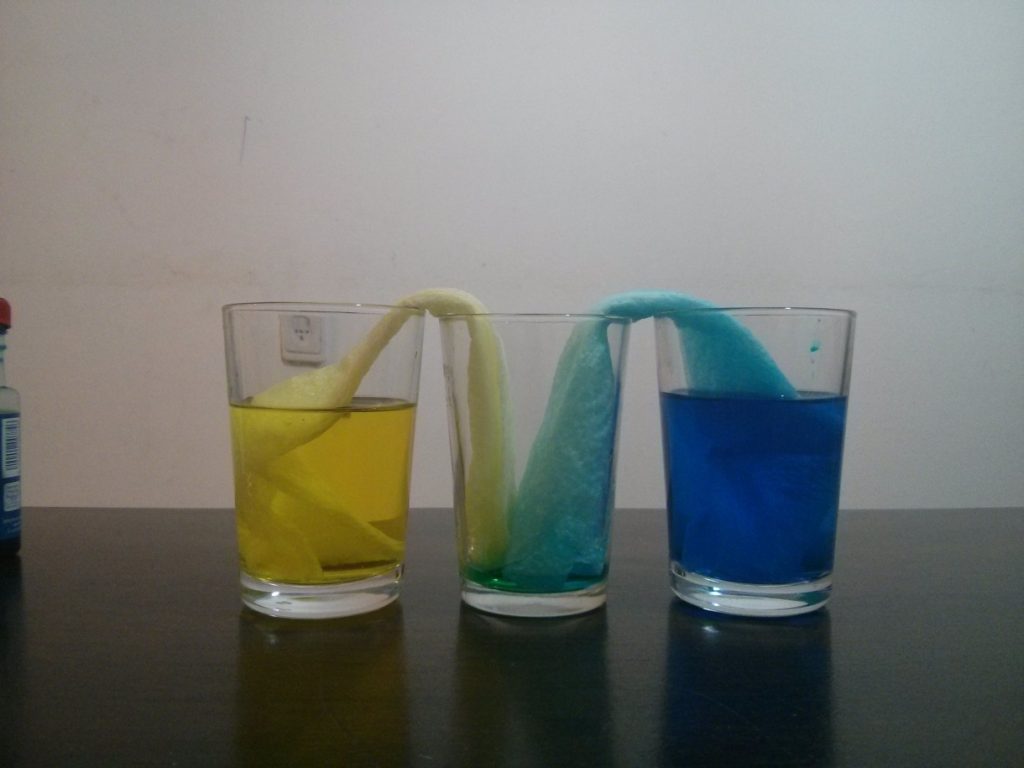
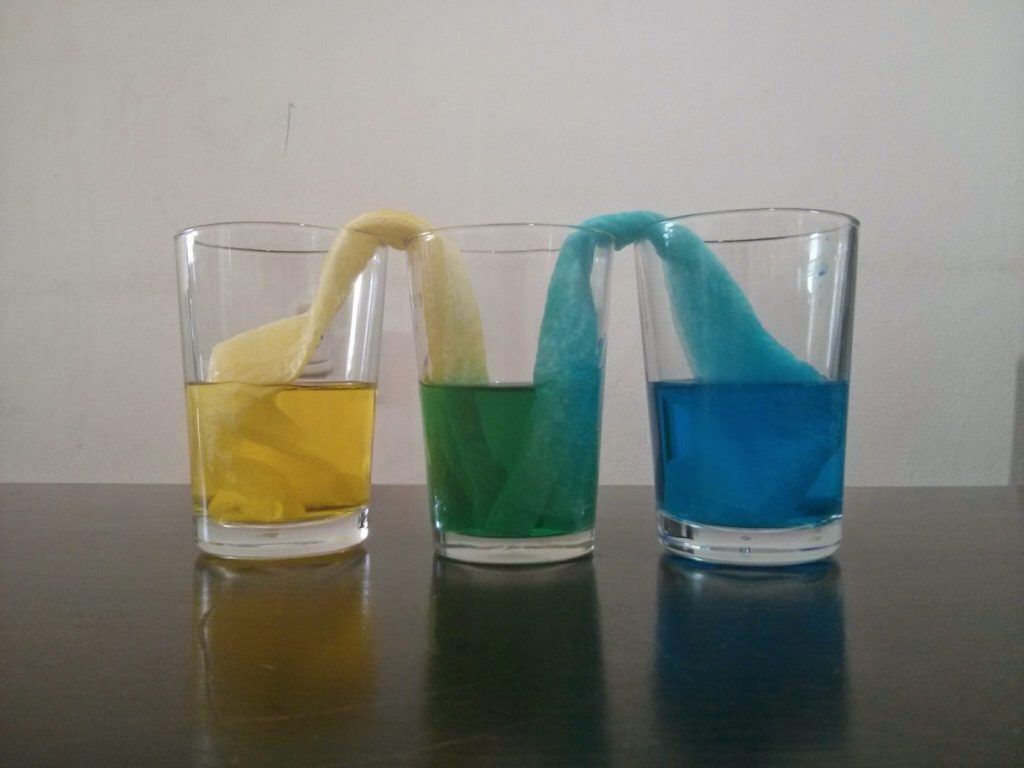
We’d love to showcase your creativity!
Share pictures of your experiments with us, and together, we can inspire young scientists everywhere!
